Stamped Concrete and Its Preparation and Construction Methods
What is Stamped Concrete?
Stamped concrete is a concrete which gives similar appearance to bricks, tiles, or wood etc., after stamping or texturing or patterning. Stamped concrete is generally used for sidewalks, driveways inside house, pool decks, interior flooring etc. to give aesthetic appearance.
When compared to bricks or tiles or wood etc., stamped concrete has better properties as follows
- Low cost
- Durable
- Less maintenance required
- Many Designs and colors are available
- Even surface
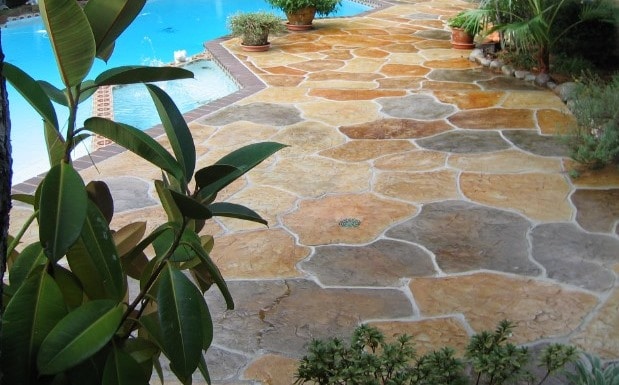
Preparation of Stamped Concrete Surface
Preparation of stamped concrete surface is very simple but care should be taken. The process involved in several steps which are explained below.
Preparation of Subgrade Soil
The subgrade soil should be well compacted and even surface. Otherwise soil erosion may occur which effects the concrete slab. We know that concrete is weak in tension, whenever there is an unevenness in the subgrade soil, then the surrounding concrete region subjected to bending and fails at where tensile force develops. So, care should be taken while preparing the subgrade surface.

Arrangement of Forms for Stamped Concrete
Forms acts like barrier for fresh concrete to hold it in a particular place. These are made from wood or metal. After preparing subgrade, forms are arranged based on our choice of shape of deck or way. The forms should be in good condition to hold the concrete in correct place. The corners created by forms should be in clean shape.
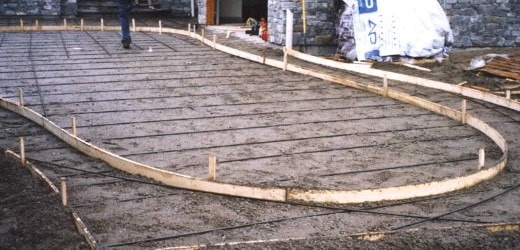
Provision of Reinforcement in Stamped Concrete
Steel bars or wired mesh are used as reinforcement materials for stamped concrete. For small area surfaces it is not necessary but for larger decks and drive ways reinforcement will give superior stability. Another advantage is if soil erosion happens in future under the slab, because of steel it can bear some tensile strength also. So, providing reinforcement is better for long durability especially for driveways or vehicle parking places.
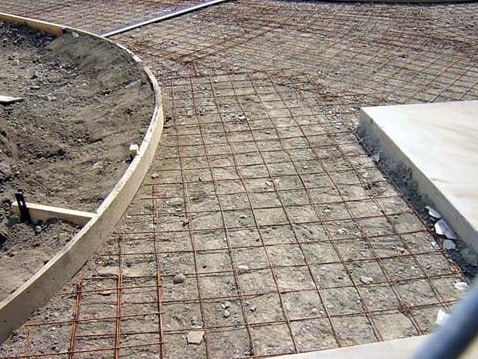
Pouring Concrete for Stamped Concrete
Generally concrete is prepared in ready mix plant and pour into arranged forms by tube or pipes. Pouring should be done as quickly as possible otherwise rapid hardening of concrete occurs. For small area works concrete should be carried with buckets and pour into the forms but care should be taken against segregation of concrete.
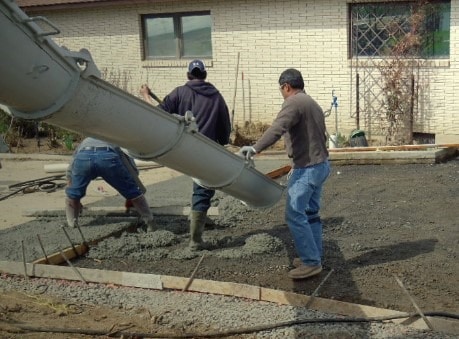
Leveling Stamped Concrete Surface
After pouring concrete, quickly strike off or level the concrete surface with smooth finishing. For this purpose, straight edges are used. It should complete quickly otherwise bleeding occurs. After finishing the concrete surface should be free from spots.
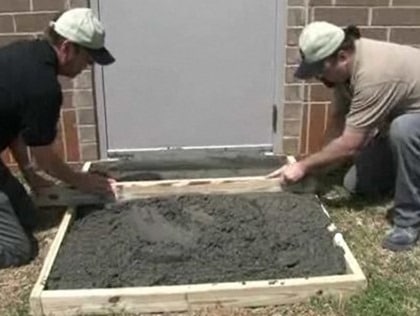
Coloring of Stamped Concrete
There are so many ways for coloring of concrete and they are
- Integral color method
- Dry shake color hardeners
- Stains
- Liquid release agents
Integral Color Method for Stamped Concrete
In this method, color is added to concrete during mixing of concrete. Whole concrete mix will possess same color so, if there is any breakage in the slab, the integral portion also exhibit same color. But in this case, we cannot get required amount of color because of mixing. It will give dull appearance.
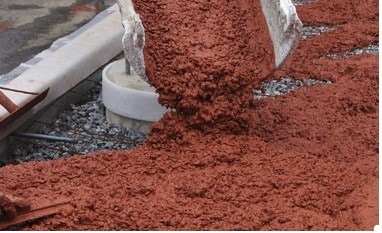
Dry Shake Color Hardeners
Dry shake color hardeners are applied on fresh concrete surface by hand. They are very fine powdered particles so, they settle in between cement and sand particles and make them less permeable. These are available in wide range of colors and gives bright appearance to the surface. But in this case color is only permitted to some depth of slab only.
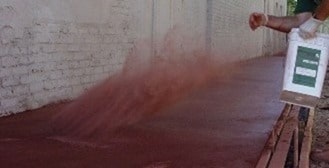
Powdered and Liquid Release Agents
This is the best and popular method used for stamped concrete. In this method, integral colored concrete or normal concrete (with dry shake hardening) is poured and after stamping process darker liquid released agents are applied for bright color appearance. The release agents are available in powder and liquid forms. Powdered agents give more bright contrast than liquid agents.

Stains in Stamped Concrete
In the above three processes we cannot create multiple color stamped concrete but stains can be applied to individually to the designed areas. So, it should be done after stamping process. They produce natural colors and give great appearance.
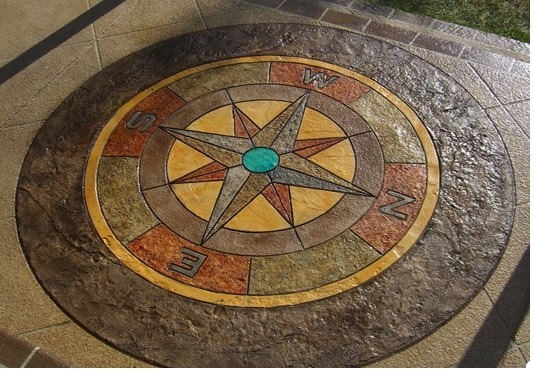
Stamping of Concrete
For stamping purpose, special made stamps are available with many no.of designs. The stamps made from plastic or rubber. In this process just take the stamp mat and place it on the concrete surface and just press with small force. Stamping should be done quickly otherwise concrete may hardened. Finally check the design lines and correct them with sharp tool.

Checking Joints
After curing, check the joint lines thoroughly, if there are any cracked joints then fix them with integral colored concrete. And also install contraction joints at some planned points to prevent it from temperature changes and shrinkage.
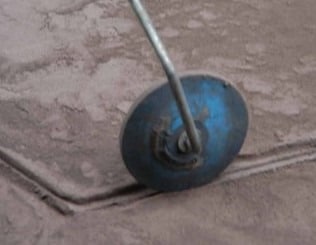
Curing of Stamped Concrete
After stamping leave it for 24 hrs. of initial setting time and then remove the excess amount of powdered agent with smooth brush.
Sealing of Stamped Concrete
Sealing is the final and important process in which sealer is applied to surface which improves the color quality of concrete. This will make the surface more impermeable and acts as protection layer from stains, dirt etc..
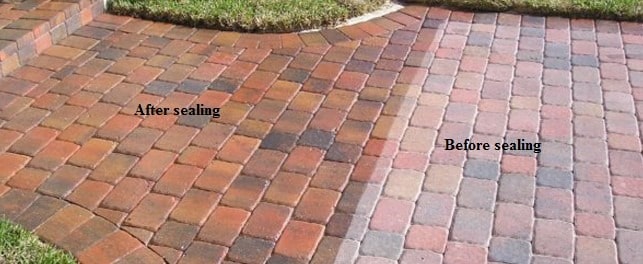

No comments:
Post a Comment